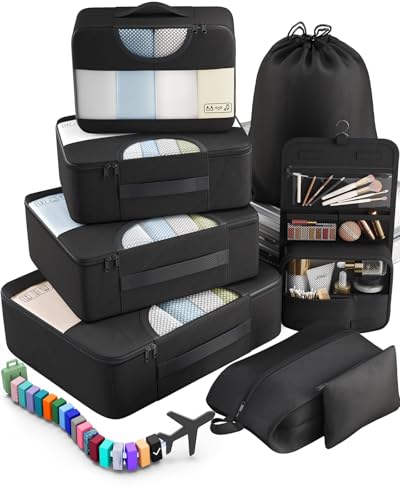In Chile, they use Type C and L power plugs and outlets. The voltage is 220V, and the frequency is 50Hz.
So, you’ll need a travel adapter in Chile. Their plugs and outlets are different from the Type A and B ones we use back in the States.
Quick Overview of the Plugs in Chile:
- Plug type in Chile: C and L
- Standard voltage: 220V
- Frequency: 50Hz
- Need a travel adapter? Yes, you do need a travel adapter
- Need a voltage converter? Some gadgets will probably need it
- Recommended plug adapter: Vintar Universal Travel Adapter Kit
All information on this page is carefully verified through official data from local electrical authorities, IEC international standards, and real-life input from travelers worldwide.
The Only Travel Adapter You’ll Need in Chile
There’s nothing worse than arriving in Chile and realizing your charger is completely useless. We don’t sell travel adapters, but we did the homework so you don’t have to. After researching voltage, outlet types, and safety, this one is your best bet:
Recommended Travel Plug Adapter
by 1,000+ travelers on Amazon
If you’ve already left and forgot your power adapter, don’t worry. Airports and shops in most countries carry basic adapters. That said, it’s always easier to bring a reliable one from home so you’re not stuck buying whatever happens to be available.
People visiting Chile often continue their journey into Argentina, Peru, and Bolivia. Plug types differ, so check what works where.
Power Outlets in Chile
In Chile, they use Type C and L power plugs and outlets.
Type C

Type C outlets have two round prongs and no grounding pin. Type E and F plugs usually fit too, but grounded plugs will need an adapter.
Type L

Type L outlets have three round prongs in a straight line and support different power ratings. Some Type C plugs may also fit.
Do You Need a Voltage Converter?
Your electronics must match the voltage of the country you’re visiting, and in Chile, the voltage is different from the 120V we use in the U.S. That means you’ll probably need a converter.
Always check the label on your device before plugging it in abroad. If it shows “100-240V, 50/60 Hz”, your device supports both 120V and 220-240V and doesn’t need a voltage converter. This is common for laptops, tablets, smartphones, cameras, and rechargeable toothbrushes.

Which Travel Devices May Need a Converter?
Need a reliable voltage converter? These are the top picks according to real reviews — check them out.
| Device | Need Converter? | Notes |
|---|---|---|
| Phone | ❌ No (usually) | Most modern phone chargers are dual voltage (100–240V) |
| Laptop | ❌ No (usually) | Check the power brick label for 100–240V |
| Hairdryer | ✅ Yes (often) | High wattage; many models are not dual voltage |
| Electric toothbrush | ⚠️ Check voltage | Some models are 110V only |
| Camera / DSLR | ❌ No (usually) | Most chargers are dual voltage |
| Power bank | ❌ No | Charges via USB, adapter is enough |
| Electric shaver / trimmer | ⚠️ Check voltage | Older or cheaper models may not support 230V |
| Tablet / iPad | ❌ No | All models are dual voltage |
| Portable fan | ✅ Yes (sometimes) | Many models are not compatible with 230V |
| Game console | ⚠️ Check voltage | Newer consoles like PS5 and Xbox are often dual voltage — check to be sure |
| Bluetooth speaker | ❌ No (usually) | Charges via USB |
| E-reader (Kindle, etc.) | ❌ No | USB charging only, no converter needed |
Top Travel Essentials to Pack
Staying organized and prepared makes all the difference when you’re far from home. These travel-friendly items help you do just that.
Digital Luggage Scale
Packing Cubes
Power Bank
More About Chile
Chile stretches nearly 2,700 miles—like driving from Maine to Florida—with deserts in the north, lakes and volcanoes in the center, and glaciers in Patagonia. It’s safety-conscious and tourist-friendly, though street crime can pop up, so city smarts are a must.
You’ll hit six UNESCO spots, four climates, and a rich foodie tapestry of seafood, wine, empanadas, and street treats. Travel by sleeper bus, scenic train, or quick flight—it’s built for exploration.
Whether it’s iceberg‑blue fjords, desert star shows, or vineyard sunsets, Chile blends raw nature, modern city energy, and cultural depth in a way few countries match.
Top places to visit in Chile: Santiago, Valparaíso, San Pedro de Atacama, Puerto Varas, and Punta Arenas.




